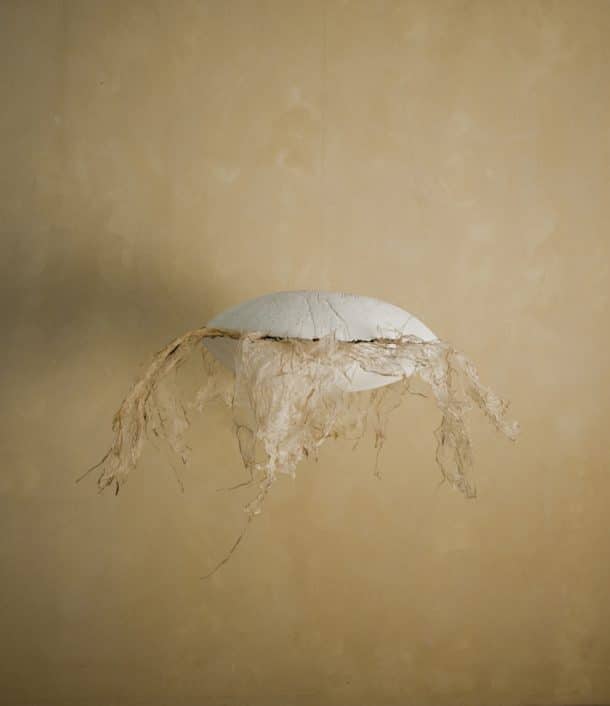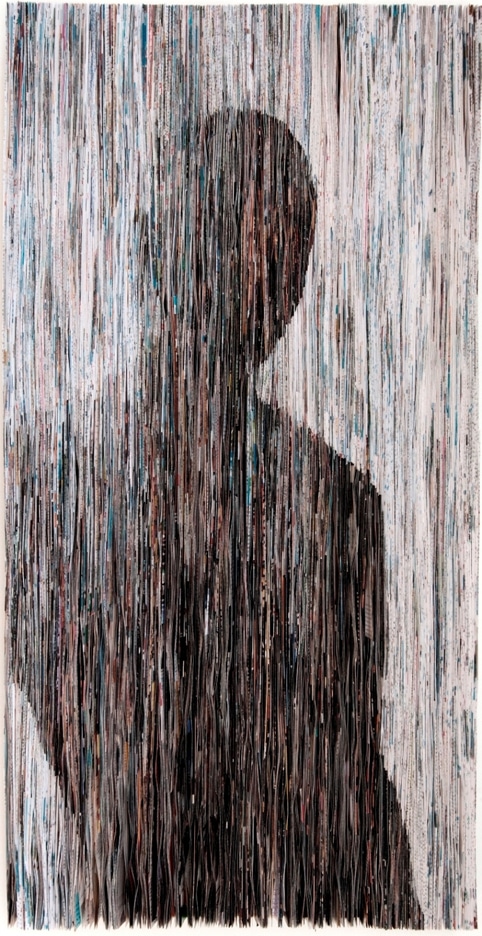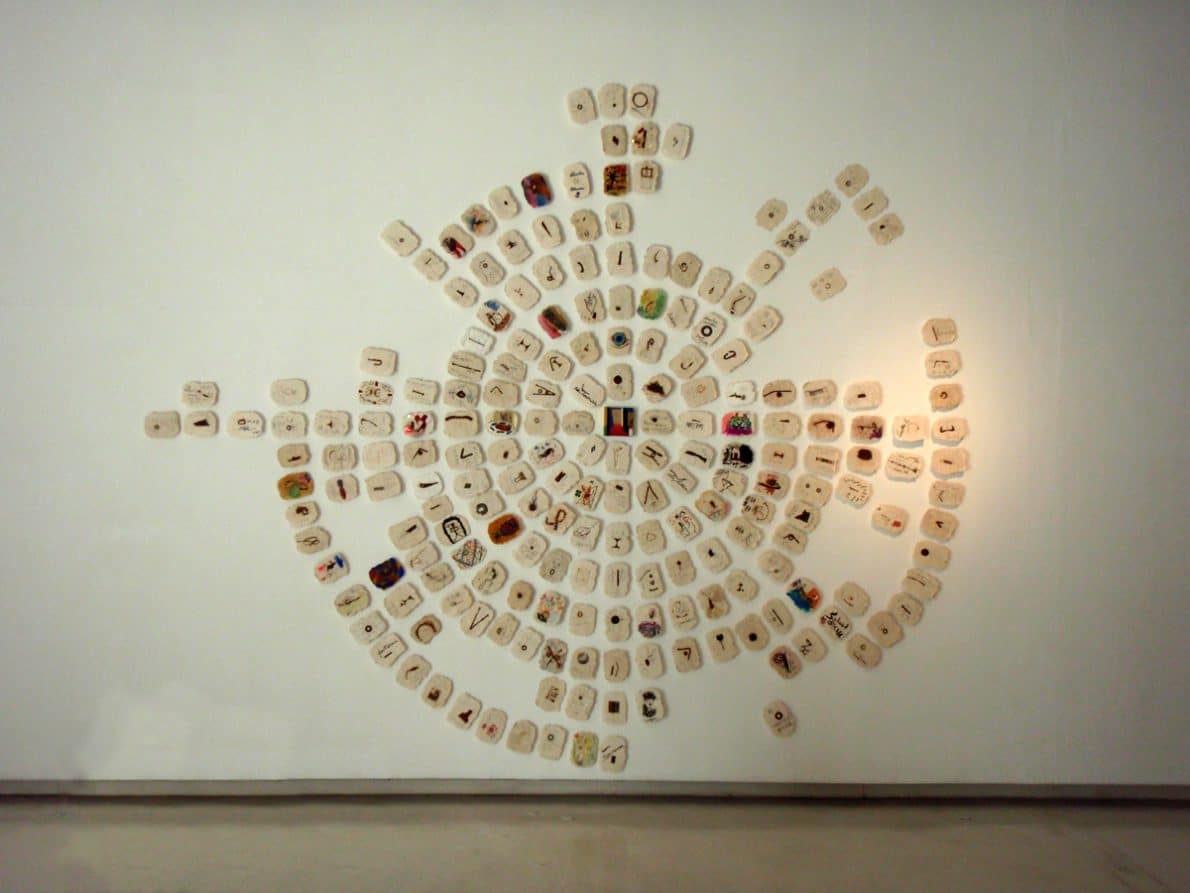The exhibition "In Between" shows a variety of works in which the paper itself is the artistic medium and artists investigate its expressive possibilities.
“If you are a poet, you will see clearly that there is a cloud floating in this sheet of paper.
Without a cloud, there will be no rain; without rain, the trees cannot grow; and without trees,
we cannot make paper. […] If we look into this sheet of paper even more deeply, we can see
the sunshine in it. […] Looking even more deeply, we can see we are in it too. This is not difficult
to see, because when we look at a sheet of paper, the sheet of paper is part of our perception.
[…] As thin as this sheet of paper is, it contains everything in the universe in it.”
[Thich Nhat Hanh*]
This exhibition presents traditional art alongside contemporary art, Asian art and Western art. It serves as a cultural bridge located “in-between,” as the title of the current show which features paper artists from the Far East alongside artists from Israel, Europe and the United States. The theme of in-betweenness articulates the changing space between opposites: between nature and culture, East and West, text and texture, unity and multiplicity, flatness and volume, above and below; between the image and its dissolution.
The culture of the East is founded on the idea of constant transformation of complementary opposites. The Buddhist maxim from the Heart Sutra, “Form is emptiness, emptiness is form,” best illustrates this concept of reality. Form emerges from the void, and thus it will also disappear one day, only to reappear.
The present exhibition marks the 25th anniversary of the International Association of Hand Papermakers and Paper Artists (IAPMA), which brings some 400 paper artists
together, from the world over. The 51 artists selected for the current exhibition represent a wide range of cultures and approaches to paper. Some create the paper by hand and
incorporate additional ingredients; some opt for readymade printed paper which they process by folding, cutting, tearing, gluing or layering. In the case of yet others, the paper becomes three-dimensional, or transforms into a spatial installation by casting into a form, sculpting in papier-mâché, fine braiding of paper threads, or suspension of paper strips.
Paper, which was invented in China and traveled to the West, has carried the totality of human culture with it for two thousand years. Now, at the beginning of the third
millennium, after more than two thousand years in which paper has played a key role
in culture and history, humanity is gradually transforming to the virtual era in which data
is registered on chips. This crucial point in time is akin to an interim stop calling for
contemplation of the role of paper and an observation forward and backward at the same time. How Would human culture, as we know it, have developed without paper? Without ruler lists, biographies, love letters, poems, stories and tales, drawings and prints?
In her book Paper Art, Dorothea Eimert reviews the short history of paper art. In the collage works of Picasso and Braque from 1912, printed cut paper became a means of expression. However, the significant development of paper as an artistic medium began later. The European Zero Group, which strove for minimalism, experimented in paper in the 1950s, cutting and accentuating of geometrical forms in it to achieve painting without brush and paint. The eschewal of traditional painting led to a search for
unconventional means of expression in the United States as well. From the 1960s on, artists began experimenting with “painting” created by natural processes where paper comes in contact with fire, water, earth, plants, etc… The rediscovery of handmade paper by artists such as Jackson Pollock, Willem De Kooning, and Robert Motherwell, was made possible, to a large extent, by “ardent fans” such as Kenneth Tyler, who opened an experimental center for paper in the United States, and brought great technical know-how with him. Tyler put that knowledge at the disposal of artists, among them Frank Stella, David Hockney, Ellsworth Kelly, and Anthony Caro, whose work enabled many others to rediscover paper and regard it as an autonomous substance.
A significant contribution to the development of the medium was made by paper museums established in Europe and Asia in paper-making centers. These institutions recount the chronicles of paper, presenting contemporary paper art. An International Biennale of Contemporary Paper Art has been held in Duren regularly since 1988. As for Israel, in 1979 a paper workshop began operations in Beer Sheva under the instruction of Joyce Schmidt (1942-1991). A group of paper artists who studied with Schmidt began holding regular symposia, exhibitions, and workshops.
The value of paper was gauged throughout the history of art mainly by the significance of what is inscribed on it. Paper artists redeem the paper from its traditional role as a surface for text or artworks, choosing to explore it as a fascinating medium in its own right, by virtue of the range of expressive possibilities it embodies.
Guest curator:
Shir Meller-Yamaguchi
Nirit Dahan
Artists: Sara Agami (Israel), Hana Altaratz (Israel), Argenide (Brazil), Shunske Asakura (Japan),
Laura Behar (Israel), Katrin Biffi-Frey (Switzerland), Young-soon Cha (Korea), Dania Chelminsky-Leshem (Israel), Ruth Cohen (Israel), Anni Fill (Denmark), Mishe Gordon (Israel), Kijoo Han (Korea), Carmel Ilan (Israel), Jeongmin Ku (Korea), Ora Lahav-Chaaltiel (Israel), Nammi Lee (Korea), Woohyun Lee (Korea), Youngjo Lim (Korea), Timmna & Izhar Neumann, Ohad Tsfati (Israel), Elena Osterwalder (U.S.A),
Chanhong Paik ( (Korea), Brenda Parsons (U.k), Charmian Pollok ((U.K), Batya Redner (Israel),
Yngve Riber (Denmark), Masao Sasaki ((Japan), Lilo Schaer (Switzerland), Hiltrud Schafer (Germany),
Marie Schirrmacher-Meitz (Germany), Joyce Schmidt (Israel), Ruth Shomroni (Israel), Sigrid Schraube ((Germany), Ismet Tatar ((Cyprus), Helen Tschacher (Germany), Tirtsa Valentine (Israel),
Haya Wiesshaus (Israel)
Be'er Sheva municipality
Kivunim
Ministry of Culture and Sport










